
views
Doing Research

Read the DSM-5 and ICD-11 definition. These manuals will give you a general sense of what autism is like, although they do not go into great detail. It can be a helpful starting point in understanding the basics of autism. The definition does not completely fit everybody—every autistic person is different! Some autistic people may have problems with sensory processing, while others don't. Some autistic people communicate nonverbally or with AAC, while others communicate verbally (and may have a rather large or sophisticated vocabulary for their age). If you know an autistic person who does not fit all the diagnostic criteria, don't assume that they're lying or "faking it"—autism is a spectrum disorder, so not everyone has every piece of it.
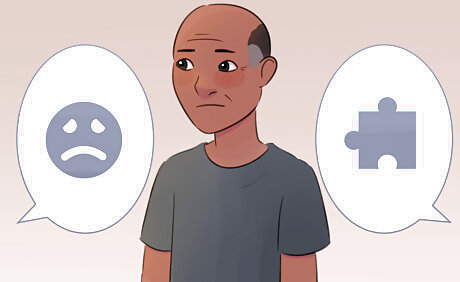
Watch your sources carefully. Not every source is credible, and not every source that claims credibility is a good one. Many scammers and people with questionable agendas claim to understand autism, and myths spread easily (even among people who meet well). Too many sources use scare tactics, worst-case scenarios, and offers of expensive "quick fixes" that don't help. Not all large groups are trustworthy. For example, Autism Speaks spread vaccine myths for years despite clear evidence and promotes restrictive diets with no scientific backing. It's not the only group that promotes questionable ideas, either. Some people paint deeply negative pictures that may scare you or lead you to wrong conclusions. If someone paints themselves as a martyr or victim, don't assume you're getting the full picture. Life can be hard for autistic people, but there's also lots of good in it, especially with the right supports.

Read what autistic people have to say. Autistic people have lived with autism for all their lives, and have the clearest picture of what is going on inside their heads. Their personal accounts can give you a glimpse into the minds of real autistic people. Judy Endow MSW, Cynthia Kim, Pete Wharmby, Amy Sequenzia, Ido Kedar, Amelia Baggs, Emma Zurcher Long, and Kassiane Sibley are also good examples of autistic writers.

Consult organizations run by autistic people. ASAN, the Autism Women and Nonbinary Network, and others have writers who know a lot about autism. These organizations can help with many things—whether it's dispelling rumors about autism, advertising any events that are in support of autism acceptance, or simply giving a perspective on something. These organizations may talk about painful subjects from time to time, such as abuse of autistic or other disabled people. If you feel like you're unable to handle hearing about those kinds of subjects, avoid them.
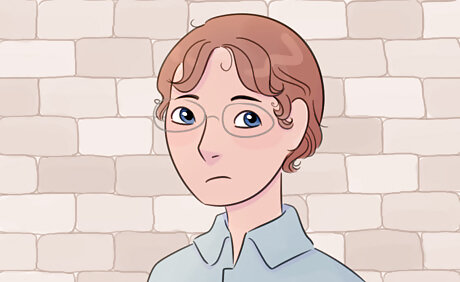
Consider the "types" of autism. Autistic people are diverse and people have long tried to sort them into subcategories. However, these attempts can be tricky. Trying to sort people into groups like "has more skills" and "has more needs" risks ignoring traits and taking away their agency. Many people just use the label "autistic." In past years, autism was separated into "classic autism," "Asperger syndrome," and "PDD-NOS" (atypical autism). These terms were later merged since there was no objective difference. The term "Asperger syndrome" has fallen out of favor since it was discovered that Hans Asperger sentenced some autistic children to death. The "high-functioning" and "low-functioning" labels are sometimes used to describe autistic people. However, both autistic advocates and experts warn that these labels overlook the complexities of people's needs and skills. They often do more harm than good. Some people now use "levels" of autism, with Level 1 requiring the least support and Level 3 requiring the most support. These labels are supposed to define needs (not skills) and be subject to change. However, there's still the risk of overlooking the person's abilities or needs based on how you sort them.
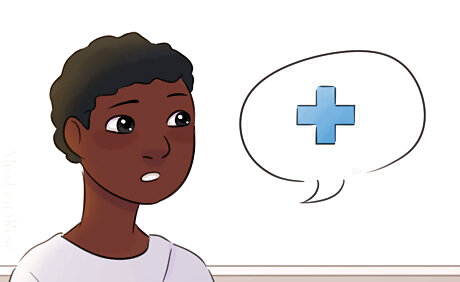
Discern between autism and co-occurring conditions. Autism rarely comes alone, so many autistic people experience quirks and struggles from other sources too. Try learning about common co-occurring conditions so you can stay informed and help more. Sensory Processing Disorder (very often co-occurs with autism) Epilepsy/seizures Gastrointestinal issues Anxiety disorders Depression ADHD Oppositional Defiant Disorder Dyspraxia SchizophreniaDid You Know? Autism acceptance and support may help with mental health issues. Autistic people who can "be themselves" tend to have better mental health than those who try to blend in with non-autistic people. Instead of putting up a non-autistic facade, autistic people need to be appreciated for who they are.
Discarding Misconceptions
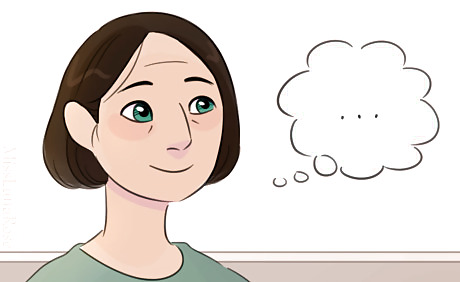
Dismiss startling headlines about an autism epidemic. Autism diagnostic criteria have improved over time, leading to more people receiving an accurate diagnosis. Studies show that the rate of autism in children is about the same as the rate in adults, and differences in survey question wording may also suggest higher rates. Keep in mind that autism is not a disease; a disability is not an epidemic or a pandemic. The terms "epidemic" and "pandemic" are most often used to describe diseases; saying that there is an "autism epidemic" or "autism pandemic" can be offensive to autistic people.
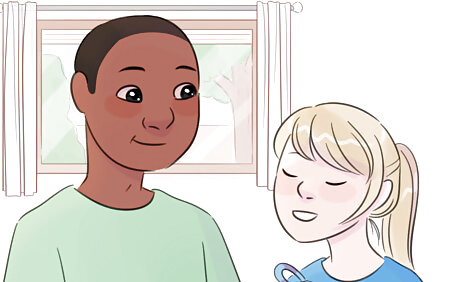
Don't confuse "developmental disability" with "developmental halt." Autistic people learn and grow, just like non-autistics do. They simply learn at a different, often lopsided, pace. An autistic girl will be much more capable at age 14 than she was at age 4, and even more capable at age 24. Don't listen to people who say "Your autistic child will never _____." There is no way to know this. People can only take things step by step.
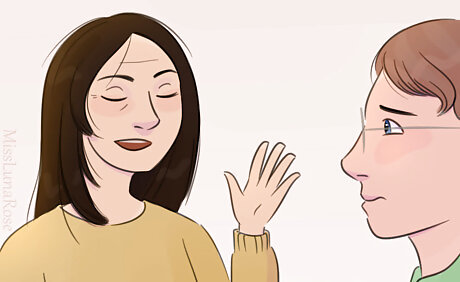
Don't be fooled by tales of vaccines. Autism is very clearly not caused by vaccines. Despite celebrity claims, the single study that found a link was found to be fraudulent. Its author Andrew Wakefield was attempting to market his own vaccine, so he skewed the data, hoping to profit. The study was retracted, his license was revoked, and many studies since have proven him wrong. Vaccines were invented in 1796, and have been used to prevent (and even eradicate) dangerous diseases such as smallpox. Conversely, the claim that the MMR vaccine causes autism was made in 1998, and was retracted by 2004.

Reject the idea that poor parenting causes autism. The "refrigerator mother" myth, which suggested that aloof mothers caused autism, has been debunked. Autistic people can be born to wonderful parents as well as terrible ones. Many parents love their autistic children dearly. On the flip side, autism will not be erased by the efforts of a "warrior parent," a parent who pours all their energy into various therapies and treatments. Negligent parents may lead to Reactive Attachment Disorder (RAD), which shares some traits with autism, but is completely different. Do not mistake RAD for autism.

Don't make assumptions about intelligence. There are autistic geniuses and autistic people with profound intellectual disability. There are also many autistic people with around average intelligence. Just like non-autistic people, autistic people exist at all levels of intelligence. An autistic person will not automatically be an expert on math or science, even if they have a high IQ. Autistic people being mathematical thinkers is a stereotype and is not always true; some autistic people are bad at mathematical or scientific topics, but they can be incredible at other ones (such as language).
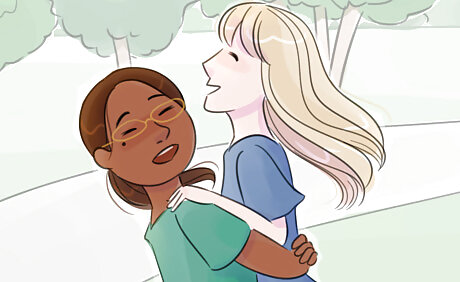
Ignore the prophets of doom. Some autism groups use scare tactics to fundraise, and this may paint an overly negative picture of autism (e.g. claiming that 80% of parents divorce, which is clearly untrue). Autistic people are capable of smiling, having fun, and loving their families. Autistic people can live a happy life and be autistic at the same time. Being autistic is not a sentence to a dark, gloomy life.

Remember that autistics aren't robotic. Some autistic people may appear unfeeling—but this may be due to thoughtfulness, alexithymia (difficulty understanding emotions), or withdrawal due to being overwhelmed. Some autistic people describe themselves as having "too much empathy," while others qualify that they struggle to understand others' thoughts, but feel them very intensely. Autistic people often feel very distressed when they see someone else upset.
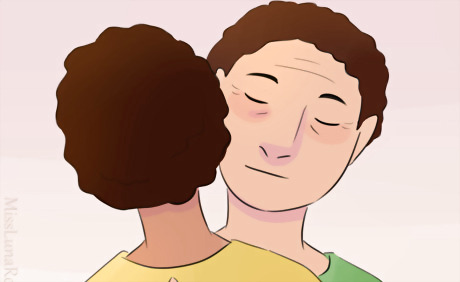
Discard the myth of violence. Autistic people are less likely to commit violent crimes than the general population is, and they are more likely to be victims of bullying and violence. If an autistic person is acting violent or aggressive, it isn't because they're autistic. They likely have a major unmet need. Autistic children may act aggressive due to abusive therapies or built-up frustration, especially if they can't speak and haven't been given AAC. This is a panicked self-defense response, and is not premeditated.
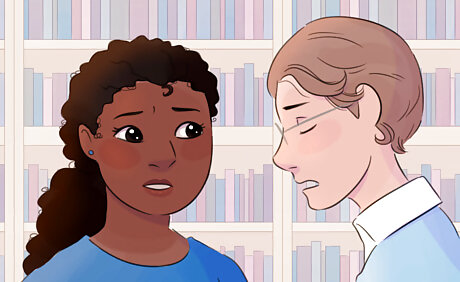
Recognize that most autistic people do care about others' feelings. Autistic people feel greater distress than non-autistics do, when they see someone who is upset. However, they are less able to understand what others are thinking. This means that autistic people may be socially clueless, and do something upsetting without realizing it.
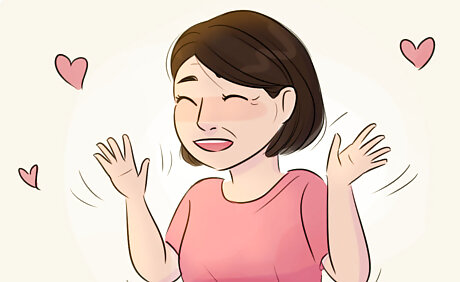
Recognize that there is no one way to "look autistic." Despite the 8-year-old white boy stereotype, autistic people can be of any age, gender, and race. Autistic people are a diverse group. Autism is lifelong. An autistic child will grow into an autistic adult. Anyone who claims they can cure autism is not being honest with you. Not everyone is diagnosed in childhood. Some may be diagnosed as teens or adults. Sometimes, they are diagnosed after their children are diagnosed. Autism tends to be overlooked in people who are not white and male. Doctors tend to focus on common traits in white males, so diagnosis may be harder for girls and people of color.
Understanding the Signs
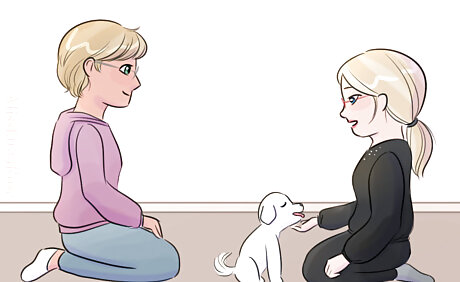
Recognize dislike or fear of eye contact. Studies show that autistic people feel afraid when making eye contact, and autistic people report it as painful and distracting. Many look somewhere else when listening—it doesn't mean that they're ignoring the speaker. Not all autistic people avoid eye contact all the time. Many make eye contact sometimes, and a few make more eye contact than most people do. Don't mistake a lack of eye contact for a lack of interests. Autistic people can have deep conversations and form close bonds without looking directly at someone's eyes.
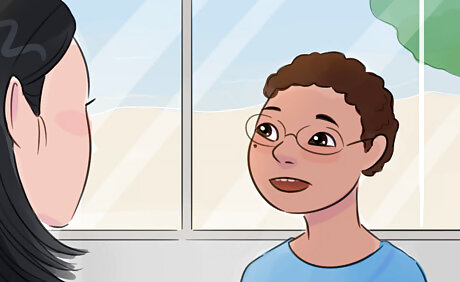
Consider idiosyncratic speech patterns. Autistic people may speak with an unusual tone, volume, speed, and/or pitch. They may repeat words, phrases, or songs (echolalia). Some may speak in a highly abstract and artistic manner.
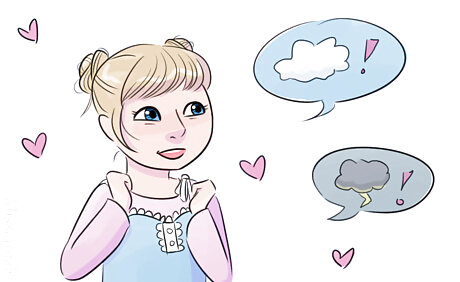
Notice special interests. Autistic people may have one, two, or more deep passions at a time. An autistic person can spend a very long time engaged with this topic, and can recite a long "infodump" of information to others. Special interests can fade, change, and be created over time. Sometimes, an autistic person may go through some time with no special interests. An autistic person feels very passionate about their interest. They may become especially talented in it. Parents can encourage the development of the interest. Sometimes, special interests can be people, whether they are romantic interests or not. The person can be a celebrity or someone that the autistic person actually knows. The autistic person may be interested in learning everything about the person, and be devastated if the two knew each other and they lose contact.
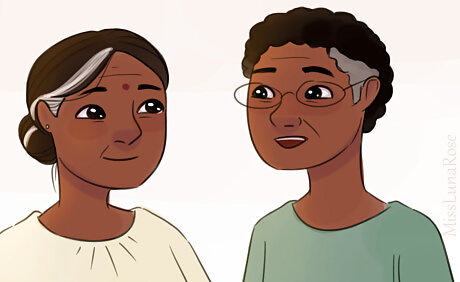
Recognize concrete use and interpretation of language. Autistic people are often sincere, saying exactly what they mean, and expecting others to do so too. They may struggle with understanding figurative language and sarcasm, and knowing whether someone is joking.

Consider the need for routine. Autistic people can become overwhelmed with unpredictability and too many decisions. Providing a clear routine can help keep daily tasks from becoming too taxing. An autistic person will often become distressed and overwhelmed if their routine is disrupted. To add structure to each day, try writing out a schedule with everything the autistic person will be expected to do that day, and when. If the person is younger or if they don't read, you might use pictures on the schedule, rather than words.

Keep executive dysfunction in mind. An autistic person may struggle with some or all aspects of executive function. Executive dysfunction is a complicated issue, and it includes... Disorganization Poor impulse control Difficulty getting started on a task Focusing trouble Difficulty self-monitoring
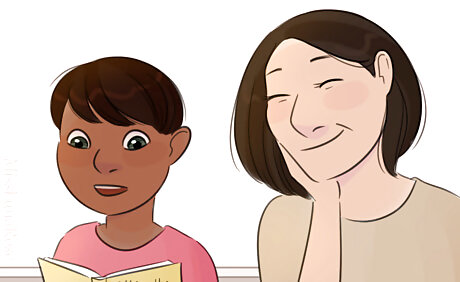
Look for slow and/or lopsided development. Autistic people may learn different things at different speeds, such as learning to read chapter books before learning to speak in sentences. Their social development may be particularly slow. Some autistic people learn to speak late. Some are unable to speak. Some autistic children meet their milestones later than average, leading to a diagnosis. Others meet them early, or out of order. Some meet them "on schedule" at first, then slow down as meeting the demands of life becomes harder, which can lead to a later diagnosis. Teens and young adults may also meet later-life "milestones" later, such as driving, getting a job, or moving out.
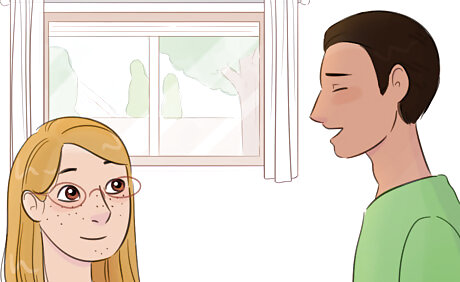
Consider difficulty with social skills. Autistic people may find it hard to start and maintain conversation, read body language, understand what other people are thinking, make friends, and handle large groups of people. Social situations can be embarrassing or awkward for an autistic person. Autistic people may not pick up unwritten social rules. They may need to be taught explicitly. Many (though not all) autistic people want to have friends, even if they're introverted. Unfortunately, communication struggles can make this harder. For example, an autistic person may not know what counts as "inappropriate" or how to help someone who is upset. Autistic people are at risk for bullying. Bullies may target autistic people because they seem different and vulnerable. Bullying victimization can make life even harder for autistic people.Did You Know? Communication struggles in autism aren't as simple as "autistic people are bad at it." In fact, autistic people communicate more easily with other autistic people. Researchers call this the double empathy problem. Both autistic and non-autistic people have trouble understanding each other.

Watch for repetitive movements. Autistic people may walk on their toes and stim, i.e., make fidgeting motions that may be subtle or unusual. Examples of stimming include flapping hands, tapping feet, playing with hair, rocking, humming, and flicking fingers. Stimming can help autistic people feel calm and focus. Stimming can help autistic people self-regulate, making it easier to manage stress and difficult environments. Don't tell someone not to stim. Stopping someone from stimming isn't healthy for them. If their stimming is causing harm, see if you can help them redirect to a harmless stim.

Consider sensory issues. Most autistic people also have Sensory Processing Disorder, in which some of their senses (sight, smell, touch, taste, hearing, vestibular, proprioceptive, interoceptive) are over- or under-responsive. They might cover their ears when they hear a vacuum, pinch their nose at the smell of spice, or rub things because they love the texture. Autistic people can be both hyposensitive and hypersensitive to sensory input. An autistic person may love noise and have headphones on all day, but may not eat certain foods because of how they feel and taste.

Recognize meltdowns, shutdowns, and sensory overload. These are stress-related breakdowns when an autistic person can no longer cope. These are different from tantrums or attention-seeking behavior because they don't happen on purpose. The autistic person should be helped away from the situation, rather than punished or scolded. Meltdowns look similar to a tantrum, but are not done on purpose. They may involve crying, screaming, lashing out, throwing oneself on the floor, et cetera. The person is too upset to fully control themselves. Shutdowns happen when an autistic person's brain can't process things, and they may stop being able to do tasks like cleaning up, talking, driving, et cetera. The autistic person may become very passive, and look sad or emotionless. Sensory overload is caused by an overwhelming environment. The only cure is time and a quiet place to rest.
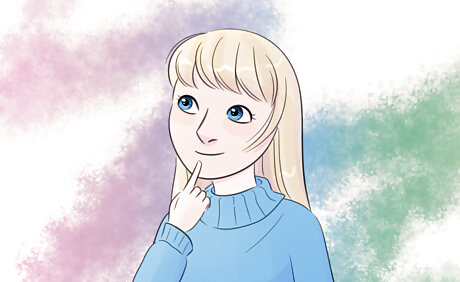
Know that autism comes with strengths as well as difficulties. While every autistic person is unique, certain skills and virtues are common in autistic people. Here are some strengths many autistic people have: Logic and systems thinking Attention to detail Visual thinking Long-term memory Sincerity Integrity Out-of-the-box thinking
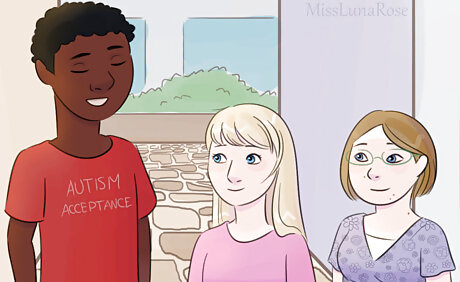
Recognize that each autistic person is unique. One autistic person may not have every trait on a list, and this is normal. Each autistic person will have their own individual personality, abilities, and needs. Don't assume that autistic people are "all the same", because they're not—and meeting multiple autistic people will prove that to you!



















Comments
0 comment